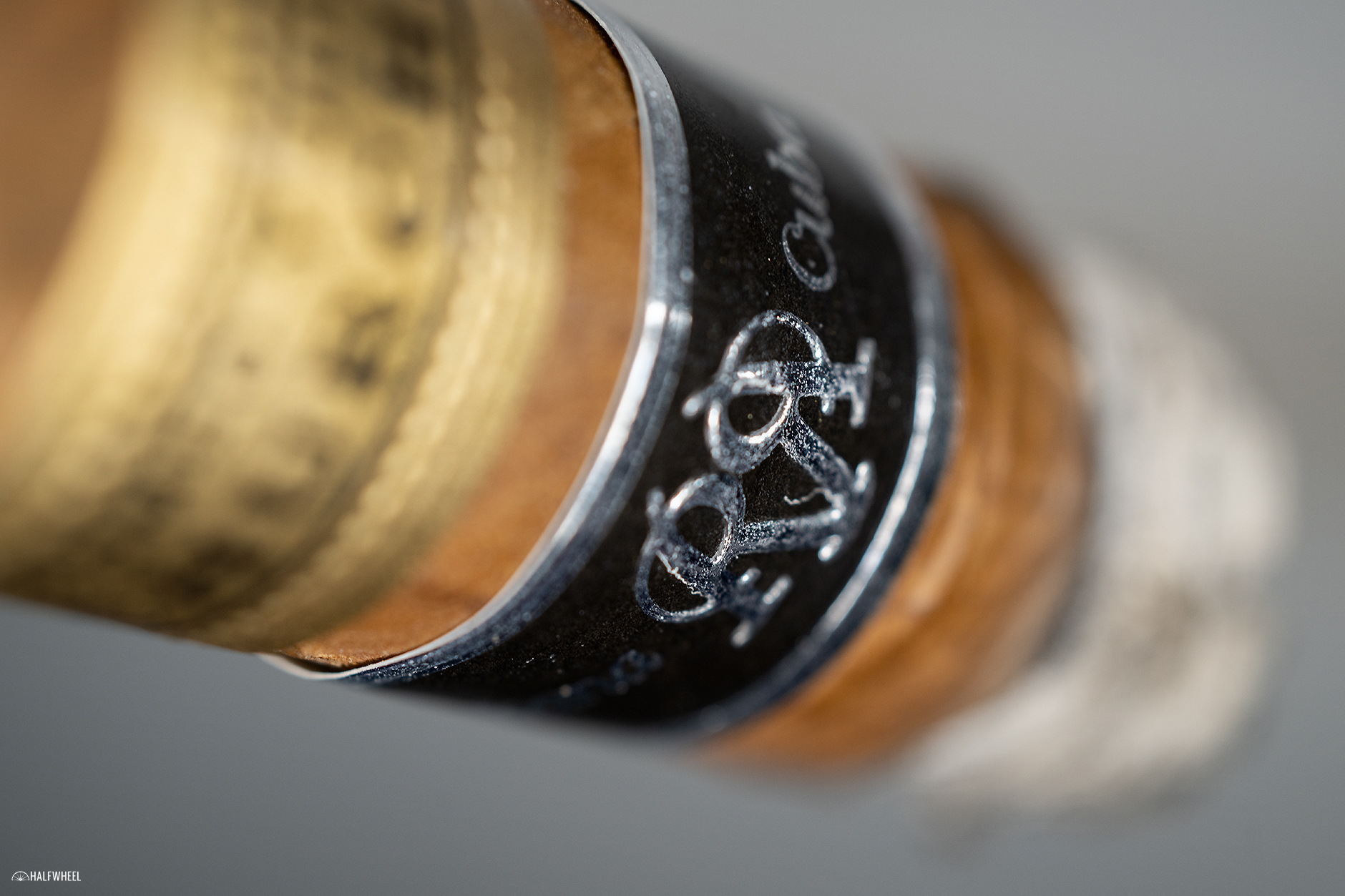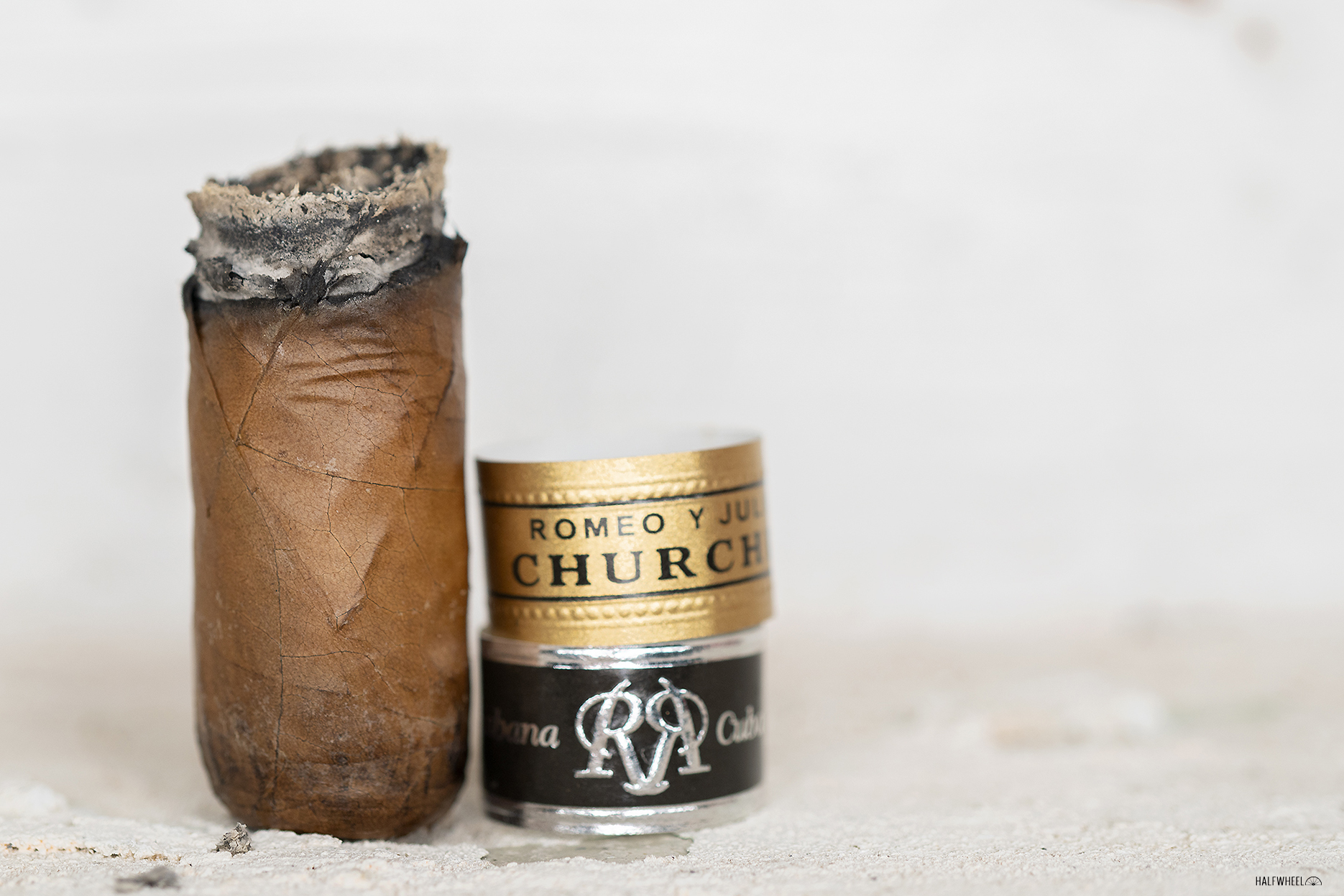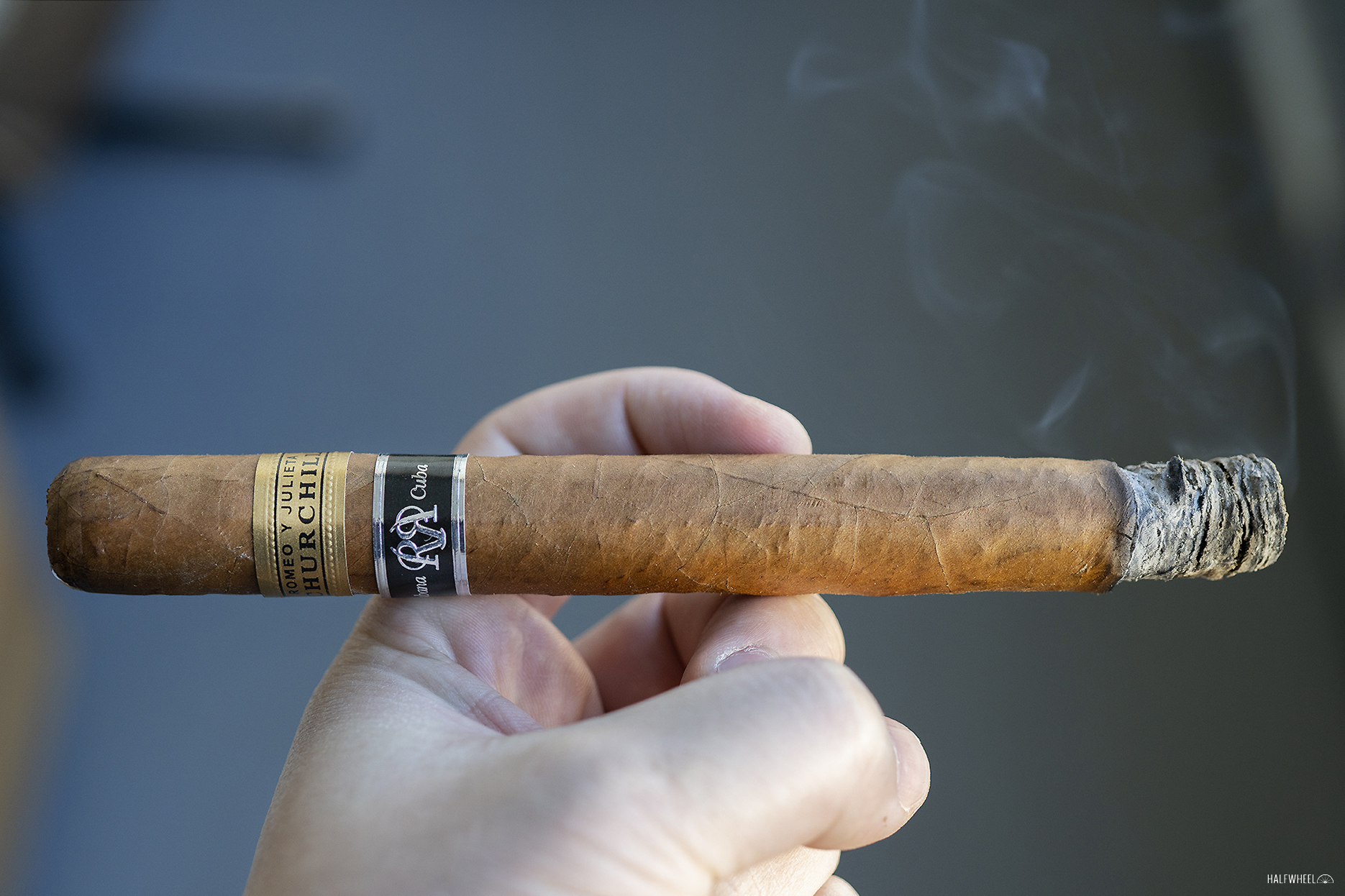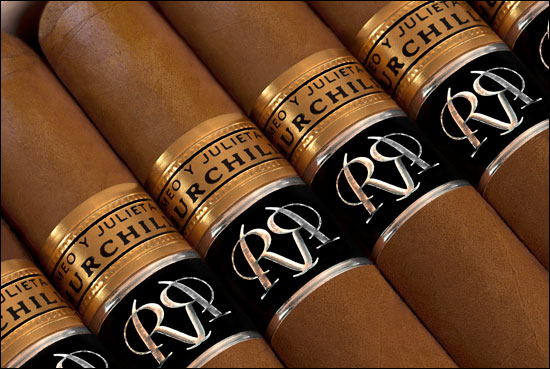Outside of why is it called halfwheel?, the question I get asked the most is some version of, are Cuban cigars the best?
For many years, my answer has been, Cuba can make the best cigars in the world, most days it chooses not to.
The reasons behind that response are based on both my experience smoking Cuban cigars in general, but the “most days it chooses not to” is a reference to the Gran Reserva and Reserva cigars that Cuba produces. It’s not because the Gran Reserva and Reserva cigars are bad, quite the opposite; they show just how good Cuban cigars can be.
Note: Since halfwheel launched in 2012, we have started off each new year with a week of reviews that are different from the other parts of the year. Rather than reviewing new cigars, we try to find cigars people might consider a holy grail cigar. These reviews are scored the same as our regular reviews, though oftentimes we are only able to procure one of the cigars, so many of these reviews are based on smoking one cigar instead of our normal three cigars per review. You can read more Holy Grail Week reviews by clicking here. — CM.
While the series technically dates back to 2003—with the release of five Cohiba cigars with Reserva secondary bands and extra aging—the current version of the series started in 2005 with the release of the Partagás Serie D No.4 Reserva Cosecha 2000. The cigar is the same size as the popular Serie D No.4, but as the rest of the name conveys, it used tobacco from the 2000 harvest. That tobacco was aged for three years, rolled, and then aged for another two years before it was sent to stores. Unlike the regular Serie D No.4, the Reserva was limited—to 5,000 boxes of 20 cigars—plus it came in a much nicer box and carried the silver and black Reserva band.
In 2009, Habanos S.A. added a Gran Reserva series, seemingly a more elite version of the Reserva, as Gran Reserva cigars used tobacco that was aged for five years. Since 2011, Habanos S.A. has announced a new Reserva or Gran Reserva release each year, Reserva in the even number years, Gran Reserva in the odd number years.
Every cigar is a special version of an existing, regular production cigar in the Habanos S.A. portfolio. Habanos S.A. previously said that it picks from what it used to define as “global brands,” meaning it needed to be from Cohiba, H. Upmann, Hoyo de Monterrey, Montecristo, Partagás, Romeo y Julieta and, technically, José L. Piedra.
In 2019, Habanos S.A. changed how it classified its brands. The aforementioned brands are still considered “global brands” except José L. Piedra. Given the 2020 Reserva was the Bolívar Belicosos Finos Reserva Cosecha 2016, it seems that Gran Reserva and Reserva cigars can come from non-global brands though I don’t recall a specific announcement confirming this.
In 2012, Habanos S.A. announced the Romeo y Julieta Churchill Reserva Cosecha 2008. This means the tobacco used is from the 2008 harvest, specifically tobaccos from the Vuleta Abajo area in Pinar del Río. The cigars were aged after rolling before arriving at stores in 2013.
Images via Habanos S.A.
Like other Reserva releases, it is limited to 5,000 lacquered boxes of 20 cigars, a total of 100,000 cigars.

- Cigar Reviewed: Romeo y Julieta Churchill Reserva Cosecha 2008
- Country of Origin: Cuba
- Factory: Undisclosed
- Wrapper: Cuba
- Binder: Cuba
- Filler: Cuba
- Length: 7 Inches
- Ring Gauge: 47
- Vitola: Churchills
- Est. Price: $40 (Box of 20, $800)
- Release Date: 2013
- Number of Cigars Released: 5,000 Boxes of 20 Cigars (10,000 Total Cigars
- Number of Cigars Smoked For Review: 3
As with every Reserva or Gran Reserva I’ve smoked, the Romeo y Julieta Churchill Reserva looks good. It’s not a perfect cigar visually: the area around the foot seems to be rolled tighter than the rest of the cigar, showing off more of the bumps and veins from the binder than the area above it, but it does still look nice. However, if you took off the secondary band, I’d have no specific reason to guess that this was a Reserva version. It’s better than what I’d expect from a Romeo y Julieta Churchill, but it’s not like the recently-reviewed Davidoff Oro Blanco where the visual superiority is immediately noticeable. The aroma from the wrapper is medium with lots of acidity leading creaminess and barnyard. The foot reminds me of birdseed—specifically the smell of opening up a metal trash can at my grandparent’s house that was where my grandfather stored birdseed—along with acidity and floral flavors. Cold draws have sweet flavors—floral, bubble gum and some Sprite sweetness—along with a bit of bitterness in the form of a dry pile of leaves sensation. Of note, the draw is a bit tighter than I’d like, though not close to be plugged.
Fortunately, the draw improves on the first puff. Flavor-wise, there’s a deep, rich nuttiness over some sweetness, bitterness and cedar. Smoke production could be better and I feel like I would have been able to identify the flavors better had I been able to get a better volume of smoke. Unfortunately, while the draw might have been better on the first puff, it’s not in a good place about 10 minutes in. It’s quite tight—but not plugged—and I gather I’m going to be in for a lengthy afternoon cigar. Flavor-wise, the cigar is led by a woody mixture—more oak than any other singular wood flavor—along with white bread, some citrus and an inconsistent floral flavor. For the first inch, there’s a weird sour creaminess—not sour cream per se—that sits underneath the rest of the flavors. The finish sees the floral flavor take the top spot in front of Lay’s potato chips, nuttiness, and—at times—some soapiness. Retrohales are tough due to the smoke volume, but I can taste sunflower seeds, floral flavors and a mild fruit punch-like sweetness. The finish is much more bitter thanks to cedar and a rubber-like flavor, though there’s also some creaminess. Flavor is medium-full, while the body and strength are medium. It takes nearly an hour to smoke through the first two inches of the cigar, something I would squarely blame on the draw. A touch-up was needed within the first inch—due to waning smoke production—and it seems like it screwed up the visual aesthetics of the ash formation, though the cigar is able to easily build chunks of ash longer than one inch.

I don’t know if it’s because the draw actually gets worse or because of my increased frustration level, but it seems like it gets slightly tighter during the second third of the Romeo y Julieta Churchill Reserva Cosecha 2008. The most important takeaways are: it’s not getting better and it’s hurting the flavor profile. Things seem to shift towards creaminess and nuttiness, sending the woody mixture to a minor part of the profile, though a building white pepper provides some contrast. The white pepper picks up during the finish, joining the creaminess and nuttiness as the leading flavors. Underneath the trio, I taste leather and some underlying sweetness. During the build-up towards the middle point there was some sourness, but it dissipates at the midway point of the cigar. Retrohales have a heavy dose of creaminess that gives way to a milder floral flavor and then a white pepper flavor. At times, I get some leather and black pepper, but neither are consistent. The finish sees the white pepper get to the top spot on its own, now leading a mixture of a tart lemon flavor and some nuttiness. Flavor is full, body is medium-full and strength is medium-plus. Right at the halfway point, the ash falls off naturally and I can see some minor tunneling. I decide to use the lighter to try to remedy this. If the draw wasn’t poor, I probably would have left it alone, but I figured it could only help the situation.

While it’s not the strongest flavor—that would be creaminess—the pepper flavor gets extremely sharp in the final third, almost to the point where I’d say it was harsh. It’s not the sensation that I normally describe as harsh, but it’s sharp enough that even though it’s not the strongest flavor in terms of intensity, it’s the easiest to identify flavor. Beyond that, I find some yellow mustard and cedar, but both are very minor in the grand scheme of things. The finish is slightly sharper and also bitter thanks to earthiness and leather. Retrohales have some weird cracker flavor, floral flavors, white pepper and some generic bitterness. Once the smoke leaves my nose, I detect creaminess, mustard and some white pepper, a better version of the combination that I find when the smoke is in my mouth. Flavor is medium-full, body is medium-plus and strength is medium-full. A touch-up helps the smoke production, but it’s not enough. The draw is still too tight and it seems to be restricting both the flavor and my enjoyment.

Final Notes
- I imagine most of our readers are rather confused about Habanos S.A.’s classification of “global brands.” I remember when I first saw it, I thought, “wait a minute, aren’t all of these cigars sold around the world except in the U.S.? Why are these ‘global’ and Punch or Ramón Allones aren’t?” This division seems to be much more relevant to the people tasked with selling Cuban cigars than consumers, but I still am not sure even I understand the point, as Punch is sold at stores around the world. Even Quai d’Orsay, the one Cuban brand that is really tied to a specific country—France—is sold around the world.
- If Habanos S.A. is willing to make Reserva or Gran Reserva cigars of any of its brands, I’d love to see it pick a Trinidad. Obviously, the Fundadores would be a great choice, but I’d be fine with pretty much any Trinidad, discontinued or otherwise. Then again, I—like most people—would also just appreciate a return to pre-COVID supply levels of Cuban cigars, so maybe this is the wrong thing to wish for.
- Many non-Cuban companies have copied the Reserva and Gran Reserva secondary bands. While some have done it better than others, I’ve yet to see one that comes close to the overall presence of what Habanos S.A. uses. These bands have the metallic levels perfected as far as I’m concerned and it’s immediately recognizable.
- Meanwhile, the main band is the older, discontinued band of the Romeo y Julieta Churchills. Normally, if you have a regular Romeo y Julieta Churchill you will see the red Romeo y Julieta Churchill and then a different gold secondary band. This older style main band is also used for the Churchills Añejados release as well. CubanCigarWebsite.com offers good images of the differences.
- When taking a puff, it was better flavor-wise to puff quicker and not try to get a full breath of smoke than taking the seven or eight seconds I could to try to get as much smoke as possible. For whatever reason, the slower puff—the one where I tried to suck as much smoke before I felt like I was running out of breath—created a much more bitter flavor.
- While this wasn’t a shining example of how good the Reserva/Gran Reserva cigars tend to be, I’m curious as to why they are typically so much better than the regular Cuban cigars. I don’t believe it’s simply because of the aging. And if was just because of the aging, Habanos S.A. should immediately announce it’s not going to ship cigars for a few years and just wait for all of its tobacco to age to the levels used by the Reserva/Gran Reserva cigars. By and large, the Reserva/Gran Reserva cigars are typically some of the very best cigars released in a given year.
- The most recently-announced cigar in the series was the 2021 release, the Partagás Gran Reserva Serie E No.2 Cosecha 2015. Your guess is as good as mine as to when this cigar will actually be on sale.
- Neither the Partagás nor the Bolivar Belicosos Finos, the most recent Reserva release, excite me enough to where I’d pay the asking prices for the special versions of those cigars except so that halfwheel could review them. That being said, the Hoyo de Monterrey Double Corona Gran Reserva—released in late 2019—is something I look forward to smoking one day. And I’d pay $85 to be able to try one.
- The MSRP used in the bullet points comes from a 2013 article in Cigar Aficionado that references them being priced at approximately $35 in Italy. Actual pricing can vary widely from country to country based on local taxes.
- We purchased the cigars a couple of years ago. We paid $86 per cigar on the secondary market.
- It took me three hours and 40 minutes to smoke this cigar. I smoke slow, but the draw was the culprit here.
If I had to list my 10 favorite modern Cuban cigars I’ve smoked over the years, a lot of that list would be cigars wearing the Reserva or Gran Reserva secondary bands. This is not one of them. And it’s also not the first time I’ve smoked a Reserva or Gran Reserva and found issues with construction. As I’ve said many times before, construction issues impact flavor and that was certainly on display here. It’s frustrating to smoke a nearly plugged cigar, but it’s even more frustrating when I can taste hints of how good it could be without the issues. I always think of this series as the best of what Habanos S.A. has to offer, and more often than not, it is. Unfortunately, even these high-priced, halo-like cigars aren’t immune from the quality control issues that can plague Cuban cigars.






